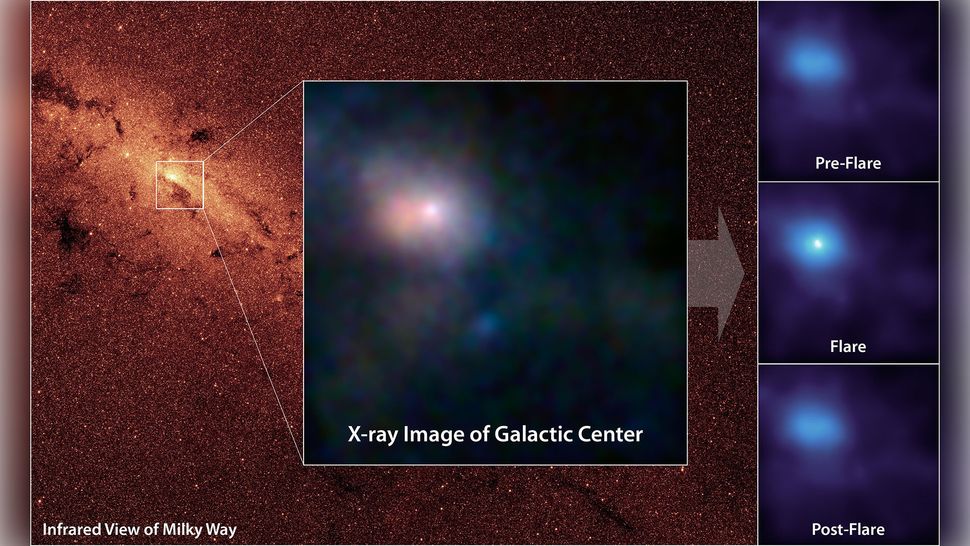Earth is facing powerful radiation every 76 minutes from a mysterious object circling Milky Way’s black hole
A new study has suggested that the regular bursts of high-energy gamma-rays, striking Earth every 76 minutes, originate from a mysterious rotating gas blob near the heart of the Milky Way‘s supermassive central black hole. This discovery by astrophysicists from the National Autonomous University of Mexico sheds light on a two-year-old mystery surrounding Sagittarius A* (Sgr A*), situated approximately 26,700 light-years away.
Initially detected in 2021, these gamma-ray pulses puzzled astronomers, as they couldn’t have originated from within the supermassive black hole itself due to its event horizon’s physics. Black holes, bound by this region, don’t emit radiation; hence, the emissions must derive from the environment around Sgr A*.
According to Chris Impey, an astronomer at the University of Arizona not involved in the research, the Milky Way’s black hole, in contrast to other black holes emitting diverse electromagnetic radiation from their accretion disks, contains limited matter and feeds so slowly that it’s comparable to a human surviving on one grain of rice per million years.
Analyzing Fermi Gamma-ray Space Telescope data from June to December 2022, researchers uncovered a periodic emission pattern occurring every 76.32 minutes. They write that this timing matches the X-ray pulses, suggesting a likely connection between the two types of emissions.

In addition, they have written in the report that this periodicity closely resembles that reported by Wielgus et al. (2022), and it bears a striking resemblance to half of the one reported by Leibowitz (2018), suggesting the latter as a harmonic of the ∼76 minutes.
“As such, all these periodicities point to the same physical mechanism as the one described by Wielgus et al. (2022), in which a blob of magnetised matter orbits about the central supermassive black hole in Sag A*,” the report reads.
The team attributed these emissions to a rapidly swirling gas mass orbiting Sgr A* at approximately 30% light speed, or around 200 million mph (320 million km/h), emitting light across multiple radiation wavelengths during its orbital motion.
Describing this as a “unique oscillatory physical mechanism,” scientists believe this discovery can enhance understanding of environments surrounding supermassive black holes, especially those with slower feeding rates like the Milky Way’s core.
The new non-peer-reviewed research has been posted to the preprint server arXiv.
Auto Amazon Links: No products found.


